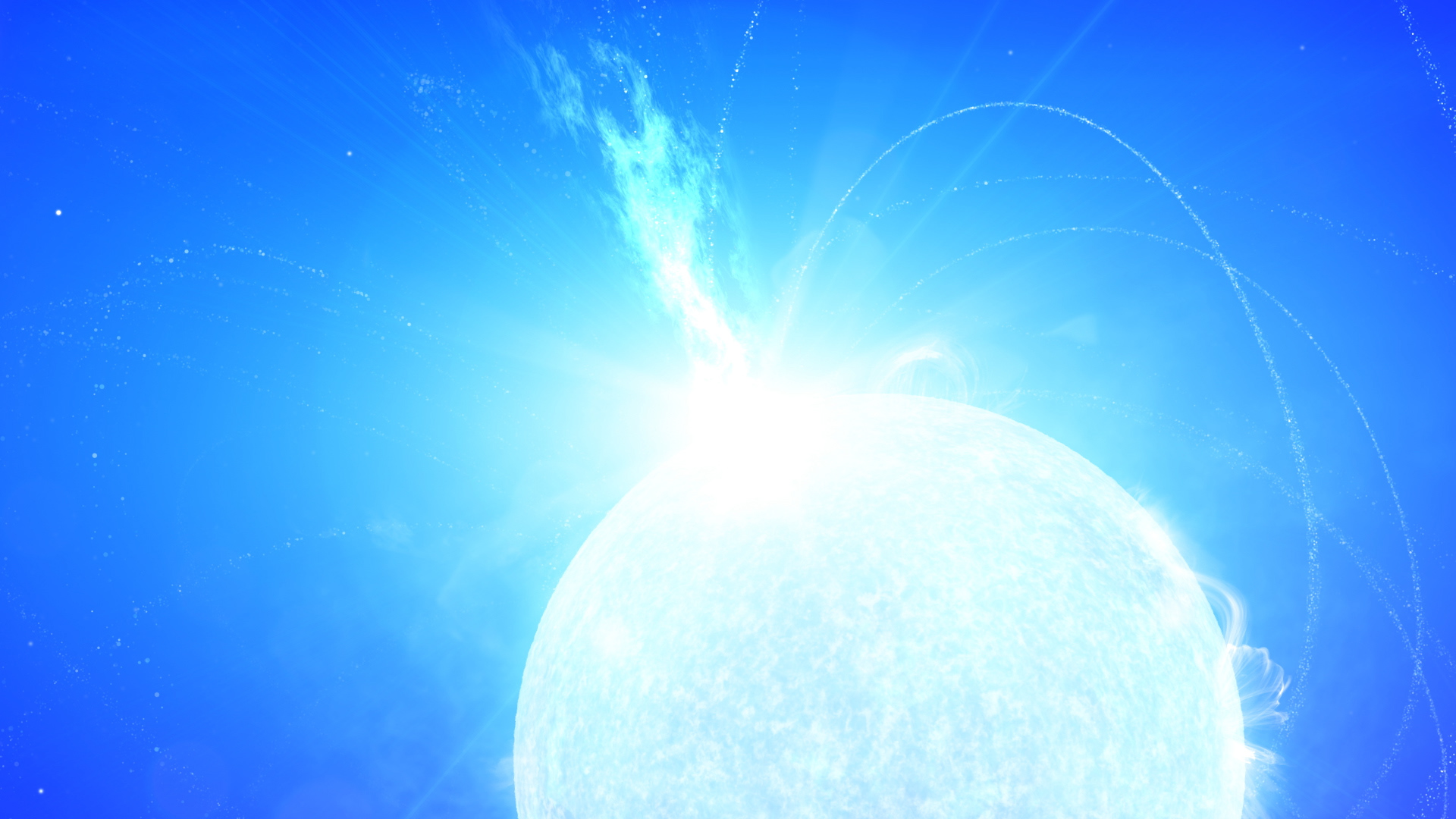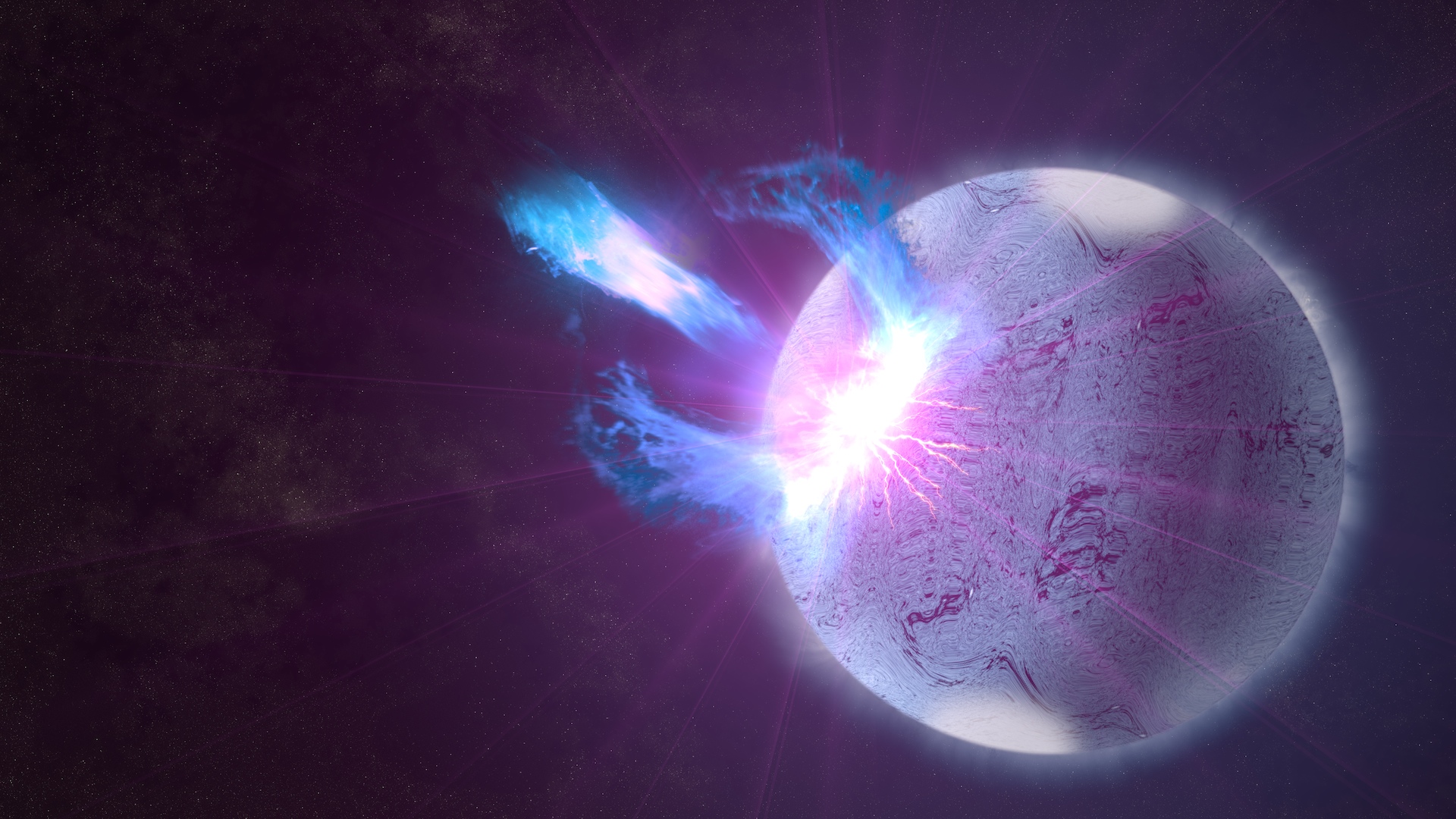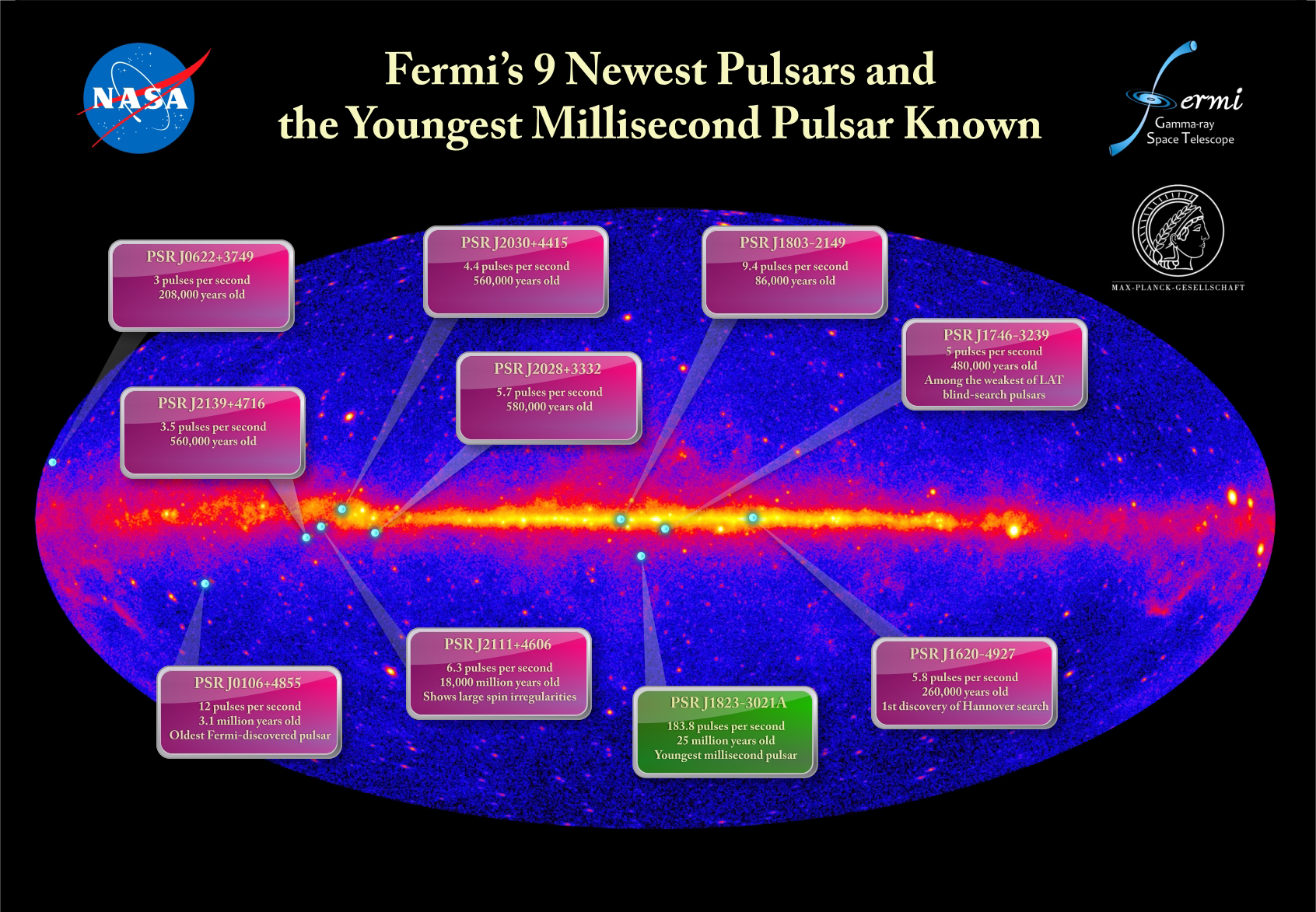NASA's Swift Catches an Anti-glitch from a Neutron Star
Using observations by NASA's Swift satellite, an international team of astronomers has identified an abrupt slowdown in the rotation of a neutron star. The discovery holds important clues for understanding some of the densest matter in the universe.
While astronomers have witnessed hundreds of events, called glitches, associated with sudden increases in the spin of neutron stars, the sudden spin-down caught them off guard.
A neutron star is the crushed core of a massive star that ran out of fuel, collapsed under its own weight, and exploded as a supernova. It's the closest thing to a black hole that astronomers can observe directly, compressing half a million times Earth's mass into a ball roughly the size of Manhattan Island. Matter within a neutron star is so dense that a teaspoonful would weigh about a billion tons on Earth.
Neutron stars possess two other important traits. They spin rapidly, ranging from a few rpm to as many as 43,000, comparable to the blades of a kitchen blender, and they boast magnetic fields a trillion times stronger than Earth's.
About two dozen neutron stars occasionally produce high-energy explosions that astronomers say require magnetic fields thousands of times stronger than expected. These exceptional objects, called magnetars, are routinely monitored by a McGill team led by Kaspi using Swift's X-Ray Telescope.
Read the rest of the story here.

An artist's rendering of an outburst on an ultra-magnetic neutron star, also called a magnetar.
Credit: NASA's Goddard Space Flight Center

An artist's rendering of an outburst on an ultra-magnetic neutron star, also called a magnetar, showing magnetic field lines.
Credit: NASA's Goddard Space Flight Center

The magnetar 1E 2259+586 shines a brilliant blue-white in this false-color X-ray image of the CTB 109 supernova remnant, which lies about 10,000 light-years away toward the constellation Cassiopeia. CTB 109 is only one of three supernova remnants in our galaxy that are known to harbor a magnetar. X-rays at low, medium and high energies are respectively shown in red, green, and blue in this image created from observations acquired by the European Space Agency's XMM-Newton satellite in 2002.
Credit: ESA/XMM-Newton/M. Sasaki et al.

A neutron star is the densest object astronomers can observe directly, crushing half a million times Earth's mass into a sphere about 12 miles across, or similar in size to Manhattan Island, as shown in this illustration.
Credit: NASA's Goddard Space Flight Center

A neutron star is the densest object astronomers can observe directly, crushing half a million times Earth's mass into a sphere about 12 miles across. This illustration compares the size of a neutron star to the area around State College, Pennsylvania.
Credit: NASA's Goddard Space Flight Center

A neutron star is the densest object astronomers can observe directly, crushing half a million times Earth's mass into a sphere about 12 miles across. This illustration compares the size of a neutron star to the area around Boston.
Credit: NASA's Goddard Space Flight Center

A neutron star is the densest object astronomers can observe directly, crushing half a million times Earth's mass into a sphere about 12 miles across. This illustration compares the size of a neutron star to the area around Montreal.
Credit: NASA's Goddard Space Flight Center

A neutron star is the densest object astronomers can observe directly, crushing half a million times Earth's mass into a sphere about 12 miles across. This illustration compares the size of a neutron star to the area around Hannover, Germany.
Credit: NASA's Goddard Space Flight Center
For More Information
Credits
Please give credit for this item to:
NASA's Goddard Space Flight Center. However, individual images should be credited as indicated above.
-
Animator
- Scott Wiessinger (USRA)
-
Producer
- Scott Wiessinger (USRA)
-
Writer
- Francis Reddy (Syneren Technologies)
Missions
This page is related to the following missions:Series
This page can be found in the following series:Release date
This page was originally published on Wednesday, May 29, 2013.
This page was last updated on Wednesday, May 3, 2023 at 1:52 PM EDT.


